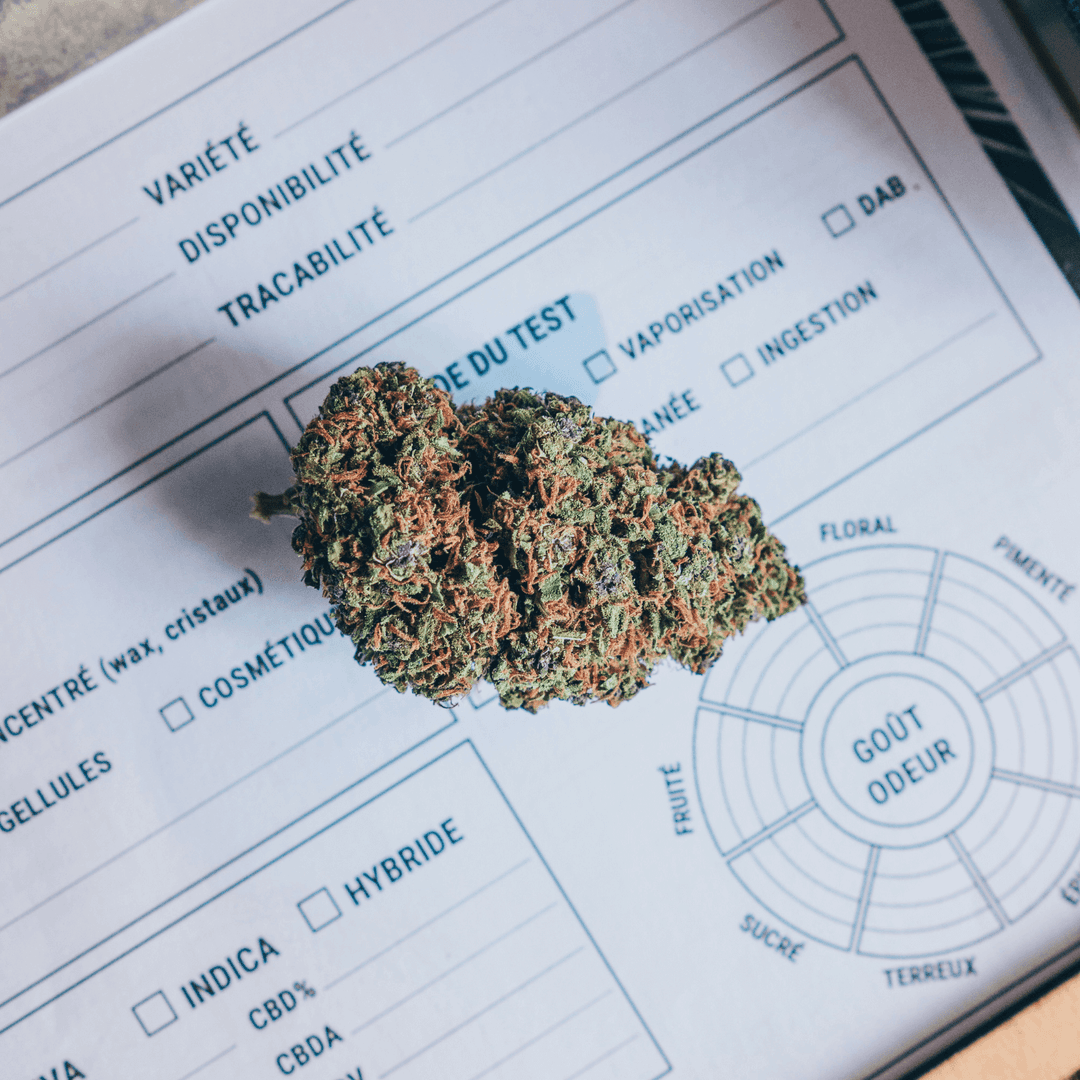
August 9, 2025admin
Cannabis Tolerance Breaks: How, Why, and What to Expect
If you’ve been using cannabis regularly and have noticed you need more to feel the same effects, you’re not alone. Over time, your cannabis tolerance builds, meaning your endocannabinoid system responds differently to THC. This is where the idea of a tolerance break—or T break—comes in.
A cannabis tolerance break is a short or extended pause from cannabis consumption to allow your body to reset and regain sensitivity to THC. Whether you use medical marijuana for symptom relief or enjoy recreational marijuana use, taking a break can help restore balance and maximize the benefits of cannabis.
Why Tolerance Builds in the First Place
When you use cannabis—through smoking, vaping, edibles, or other forms—THC binds to CB1 receptors in the brain. For chronic users, this repeated stimulation causes the receptors to downregulate, meaning they’re less responsive.
Over time, you need more THC to achieve the desired effect, leading to a high tolerance.
Frequency of cannabis use, potency, and method of consumption all impact how quickly this happens. A study showed that people who consumed marijuana daily experienced reduced effects faster than occasional users. This tolerance can affect both mental and physical health outcomes, whether your goal is intoxication, pain relief, improved sleep, or appetite stimulation.
Signs It Might Be Time for a Tolerance Break
Not sure if you should take a tolerance break? Some common signs include:
- Needing too much THC for the same effects you once got with less cannabis
- Feeling fewer positive effects like euphoria, relaxation, or focus
- Experiencing hazardous use patterns, such as increased spending or riskier situations
- Relying on cannabis to manage daily stress without breaks
- Medical marijuana losing effectiveness for symptoms like nausea or pain
If you notice any of these patterns, taking a T break could help restore your cannabis’ effectiveness.
Benefits of Taking a Tolerance Break
A true tolerance break can deliver both short- and long-term benefits. For one, you’ll often regain stronger effects from smaller doses, meaning you can consume less cannabis while still reaching your desired effect. This is great for both health and your wallet.
Other benefits include:
- Saving money on cannabis products
- Reducing greater risk of dependence or addiction
- Better sleep quality after the first week of abstinence
- Improved mental clarity and focus in daily life
- Supporting mental and physical health by lowering THC exposure
Some studies even suggest that regular breaks may improve emotional regulation and overall balance.
How Long Should a Tolerance Break Be?
The length of your cannabis tolerance break depends on your consumption habits. For occasional users, a short break of 3–5 days may be enough to feel a difference. For chronic users, a longer break—two weeks or more—may be needed.
One study found that CB1 receptors start to reset after just a few days, but full recovery can take up to 4–6 weeks, especially if you’ve been consuming high-potency cannabis products daily. Keep in mind, everyone’s body is different—your metabolism, medications, and history of marijuana use all play a role.
Tips for a Successful Tolerance Break
If you’ve decided that taking a T break is right for you, planning ahead can make the process easier:
- Set a goal: Decide on a clear start and end date for your break.
- Remove temptation: Store or give away any remaining cannabis products.
- Replace routines: Swap smoking sessions for tea, walks, or stretching.
- Stay busy: Fill your schedule with hobbies, exercise, or social activities.
- Find support: Let friends know you’re on a T break so they can encourage you.
Keeping a bit lower profile around other people’s marijuana use can help you avoid temptation, especially in the first week.
What to Expect During a Tolerance Break
Many people worry about cannabis withdrawal symptoms—and while they’re usually mild compared to other drugs like alcohol or tobacco, you might notice changes in the first week. Common symptoms include:
- Irritability or stress
- Trouble sleeping
- Lower appetite
- Mild nausea
- Restlessness or boredom
These symptoms are part of cannabis withdrawal and usually fade after several days. Some chronic users may also experience shifts in mood or dreams. Remember, this is your body readjusting after a period of regular THC exposure.
The Role of CBD During a Tolerance Break
If going completely cold turkey feels daunting, incorporating CBD may help. CBD doesn’t bind to CB1 receptors in the same way as THC, so it won’t rebuild your tolerance. However, it can be helpful for managing withdrawal symptoms like stress, trouble sleeping, or nausea.
You can use CBD in various forms—oils, capsules, gummies, or topicals—during your T break to provide support without hindering receptor recovery.
How to Reintroduce Cannabis After a Tolerance Break
Once your break is over, reintroducing cannabis mindfully will help you maintain the benefits. Start with less cannabis than before—perhaps half your usual dose. This reduces the risk of overshooting and experiencing too much THC.
Consider:
- Lower-potency strains
- Microdosing to find your optimal level
- Tracking how you feel physically and mentally after each session
This approach will help you keep your tolerance in check while still enjoying recreational marijuana or medical marijuana in a sustainable way.
Making Tolerance Breaks Part of Your Cannabis Routine
Many chronic users find that regular tolerance breaks keep cannabis enjoyable and effective. You might schedule a break every few months or after periods of heavier marijuana use. This routine can help reduce the risk of addiction and hazardous use, and it ensures your cannabis products deliver their desired effect without escalating consumption.
Regular T breaks can also encourage you to reflect on your relationship with cannabis, develop healthier habits, and maintain balance in your life—whether you use it for medical reasons or recreational marijuana use.
Final Thoughts
A tolerance break isn’t about quitting forever—it’s about recalibrating your body and brain to respond better to THC. Whether you’re a chronic consumer looking to reset after too much THC or a casual user who just wants to get more from less cannabis, tolerance breaks are a valuable tool.
By understanding the science, preparing for withdrawal symptoms, and reintroducing cannabis thoughtfully, you can maximize the benefits of your favorite cannabis products without slipping into patterns of hazardous use. Think of it as hitting the reset button—one that supports both your physical health and your enjoyment of cannabis for years to come.
Frequently Asked Questions
1. How long is considered a tolerance break?
A tolerance break (or “T-break”) can last anywhere from a few days to several weeks, depending on your goals and how much cannabis you typically consume. Many regular users find that two to four weeks is the sweet spot for fully resetting cannabinoid receptors and noticeably lowering their tolerance. Shorter breaks can still help, but the longer you abstain, the greater the reset.
2. Is 3 day tolerance break enough?
Three days is enough to notice a slight change in tolerance for light to moderate users. Heavy daily consumers may not see a big difference in just three days, but it can still help reduce dependence and refresh your high a bit. Think of it as a “mini reset” rather than a full tolerance break.
3. Is a 2 day tolerance break good enough?
A two-day break is generally more about giving your body a short rest rather than resetting your tolerance in a big way. While it may improve your next high slightly, most research and anecdotal evidence suggest that true receptor recovery needs at least a week or more. Still, any break can help your endocannabinoid system rebalance a little.
4. Is 48 hours enough for a tolerance break?
Forty-eight hours is essentially a quick pause rather than a full tolerance reset. You might notice a small increase in effects—especially if you’re a light or infrequent user—but for daily heavy consumers, this window is usually too short for a noticeable change. For a bigger impact, aim for a break of at least one to two weeks.
Related Articles

Does CBD Show Up on a Drug Test?
CBD has gone mainstream fast. From wellness routines to post-workout recovery, cannabidiol extracts sold online and in stores have become part of everyday life for a lot of people. But as CBD products become more common, one question keeps coming up: does CBD show up on a drug test?
December 18, 2025admin
How Much CBD Should a Beginner Start With? A Smart, Simple Guide to CBD Dosage
If you’re new to CBD, one of the first questions you’ll probably ask is how much CBD should a beginner start with. It sounds simple, but once you start browsing CBD products, the answer can feel anything but clear. Oils, gummies, tinctures, capsules, labels full of milligrams — it’s a lot to take in when you’re just trying to do this the right way.
December 18, 2025admin
What Do Cannabis Seeds Look Like: A Complete Guide for Growers
If you’re new to the cannabis world or looking to start your own cannabis cultivation, one of the first questions that may come to mind is, “what do cannabis seeds look like?” Recognizing healthy seeds is an essential skill for anyone who wants a successful harvest and robust cannabis plants. From marijuana seeds to weed seeds, knowing how to distinguish healthy marijuana seeds from immature seeds or old seeds can save you time, effort, and money.
November 29, 2025admin